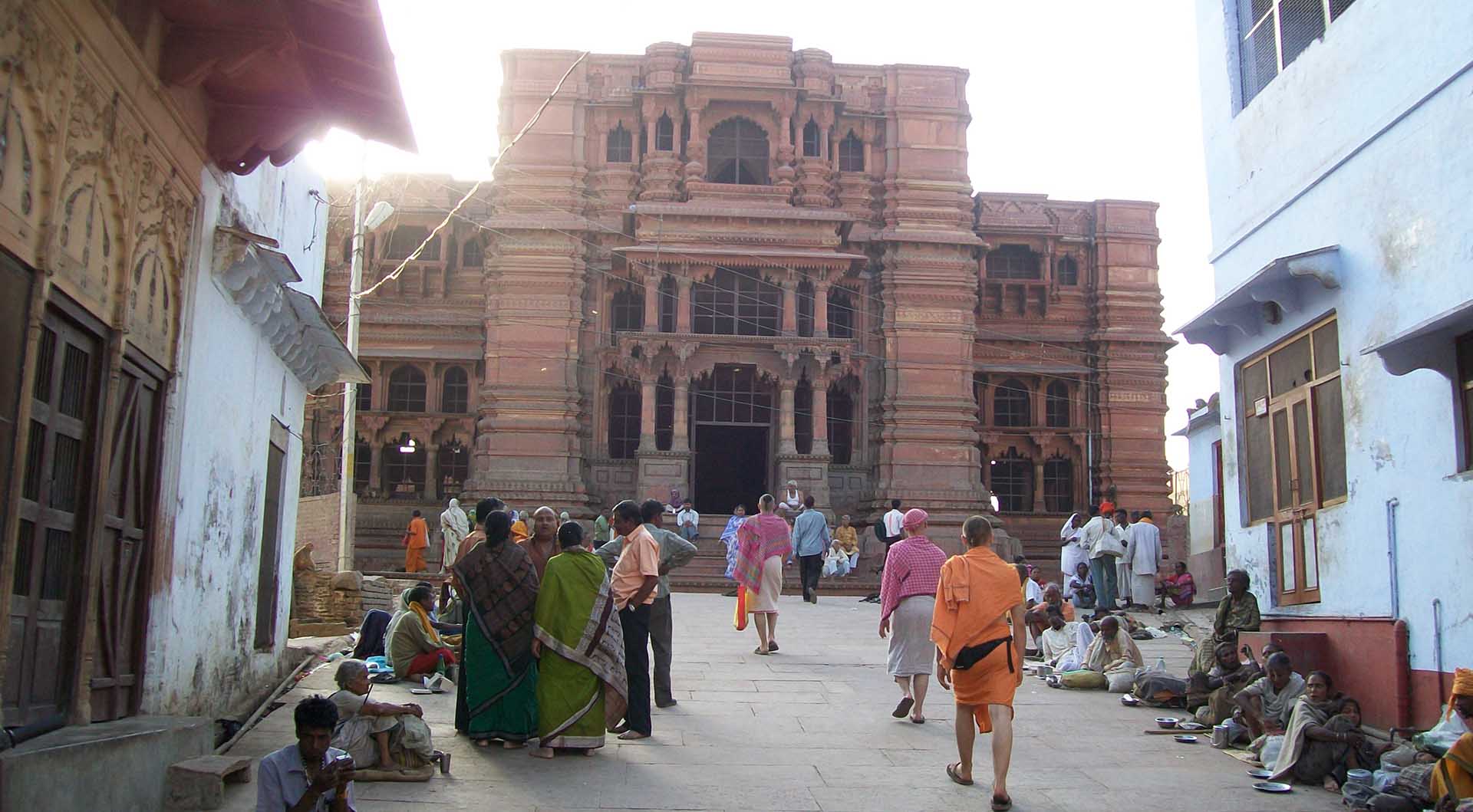
Govind Dev Mandir
In his early 19th century Encyclopedia of Religion and Ethics James Hastings points out that out of as many as one thousand temples within the limits of the Vrindavana town, four are of a special interest, with the fist listing going to this temple of Govinda Deva. Hastings translates this name of Krishna as a 'god of cattle', a literal meaning of Sanskrit name Govinda.
The temple is considered to be Man Singh's best known project, and the temple is the largest one constructed in north India since the twelfth century. The interior vaults and pillars were inspired by those used in Fatehpur Sikri and other imperial sites, but in fact were technologically more innovative then Singh's own buildings, and it has a sculptured lotus flower weighing several tons decorates the main hall ceiling. while still reflecting the Islamicate styles used in contemporary imperial Mughal architecture. It was fitted with an altar of marble, silver and gold.
Akbar visited Vrindavan in 1573 and according to tradition its believed that Hindu rajas accompanying him obtained his permission to build temples in these parts, and thus temples of Gopinath and Govind Deva were constructed by them.
Next is the Radha-Govind Deva temple that is another of the seven major temples of Vrindavana.
Old temple of Radha Govinda is one of the important temples of the holy place of Vrindavana, along with Banke Bihari temple, Nidhi Van, Sri Rang ji temple, Shah Ji temple, and the modern ISKCON temple (popularly known as Hare Rama Hare Krishna temple). It is sometimes referred as Govinda Deva temple at Mathura while the actual place is Vrindavana.
It was constructed by Raja Man Singh in 1590, who was inspired to do it after meeting Rupa Gosvami, and this seven-storey temple is an excellent example of medieval Indian architecture.
Front view of current mandir entrance from the top of the stairs at the main access.
Temple is now empty and the replica of Govind Deva is worshiped in the new smaller Govind Deva mandir, located behind the original temple in Vrindavan. However the original Govind Deva is worshiped in Jaipur. However, there is a record of using the original Govinda Dev temple for social or spiritual functions, such as a meeting of the Mahamandala, that held its second meeting in it in March 1889.
The building is well-known and stands out as its shaped like the cathedrals of Europe, built of red sandstone, however it was noted as falling in considerable decay. Some even wrongly suggested that it was a European architect, who in some 16th century was commissioned to put up a temple resembling an architectural cast of a European church with nave, transepts and choir, which are traditional parts of a cathedral building. King Akbar himself is believed to have had donated the red sandstone for its construction.
While the temple is in ruins a Sanskrit inscription on the temple confirming that it was build by Man Singh Deva, a descendant of Prithu Rao and is dated Samvat 1647 (1591 of Common Era). The foundation of this temple along with Madana Mohana temple in Vrindavana is often ascribed to the brothers Rupa and Sanatana Goswami.
The building is located in the very centre of town, on the main Mathura-Vrindavan road and is locally called "Govindaji".
Its construction is believed to be connected with the notable pilgrimage by Akbar in 1573, and it is one of four temples that were erected in honor of his visit to the holy site.It was said to have cost ten million rupees and several thousand men were working for five full years to complete it. It was erected in an era when the when the liberal policy of Akbar encouraged construction of splendid temples, is in the form of a Greek cross with the length and breadth of the nave being one hundred feet. In this shrine the limitations of the floor area, if compared with those of larger Christian churches of the Western world, is made up for by the wealth of decoration which has been lavished on every inch of the surface.
Its also believed that the first smaller shrine to the deity of Govinda was constructed by disciples of Chaitanya Mahaprabhu from Bengal, of which no trace remains, and they also became the first priests of this Govind Deva temple.


